Genre: Strategy Developer: Kellyn Beck and Bits of Magic Publisher: Electronic Arts Players: 1 Released: 1991
Caesar liked nice things, so he naturally set about gathering them, conquering Dalmatia for its wonderful dogs and seizing Helvetii for its snappy, web-friendly font. Caesar took control of most of Europe, and while some opposed him — Vercingetorix, no! — Caesar wasn’t having none of that. As he made his way around the Mediterranean, he built up enough mana to impress Cleopatra, pushed her brother aside to tap that, and moved west along the African coast. Unfortunately, his buddies got totes jealous of his success and killed him, inspiring Shakespeare to name his most favorite salad after the guy.
The above is based on a true story. The context is off, and it contains some obvious errors on the account of Caesar’s rise and conquest of the Mediterranean, but the gist of the narrative is mostly there. Though far less glib than my version, Centurion: Defender of Rome also tells of the rise of the Roman Republic, offering an abbreviated and generalized retelling of Rome’s conquest of the world. They say Rome wasn’t built in a day, but Centurion lets you knock it out in a couple of hours. It kind of feels as if developer Kellyn Beck accompanied Bill and Ted on their most excellent journey and decided to encapsulate what he saw through a handful of mini-games.
Mini-games? Centurion: Defender of Rome is no party game, but the complexities of war and maintaining control over your populace is broken down to a few simple, interactive vignettes. Before we get there, though, we must deal with the day-to-day (or, in Centurion, year-to-year) rigors of managing an empire. You begin the game as a lowly officer, assigned command of but one legion to tame the land. Italia, your starter province, is 5,000 men strong, but the people are rebellious and will not become impatient the longer their leader is away capturing the countryside. You’ll risk losing the province if you let them get too angry, but you can appease the public by spending some talents (money) to hold games to entertain the populace. Just was the NFL suppresses public revolt today, so, too, did the gladiator games of Classical antiquity.
In the PC original, gladiatorial combat was the focus of one of Centurion‘s mini-games, a feature removed from the Genesis port, now reduced to opening the appropriate menu and selecting one of the available options. Would you like to watch men fight men or men fight beasts? Ultimately, it doesn’t matter which of the gladiatorial options you select, since apart from the talent cost, they all display the same confirmation message and do not invite the player to witness the spectacle. The game also does not provide the actual cost of the various exhibitions within the interface which is an early nuisance when budgeting for your empire. Talents aren’t easy to come by, at least if you don’t want to face an angry nation tired of you pilfering their cash. You can plunder provinces for money and increase (or decrease) taxation rates, but the money doesn’t really start rolling in until you’ve built up a bit of an empire.
There is, technically, another way to earn money by venturing over to the local Circus Maximus for some chariot racing. Unfortunately, it seems Marcus has it in for our Caesar’s horses, too, as finishing a race is a mystery even Robert Stack could not solve. Due to the top-down view and lack of detail in the close-up view of the race, chariot racing mainly involves following these little representative dots on a map, slowing down for the turns, and speeding up for the straightaways. Seems pretty basic, no? I can whip to damage competing chariots or bash my own horses for a burst of extra horse speed, but no matter how I apply these tactics, I always wipe out. Every time. I’ve watched all video of the game on YouTube, read through the Genesis and Amiga manuals, and browsed assorted Internet guides and reviews hoping to obtain the lost secret of winning the chariot race but have come up empty handed time and time again. After having my driver carried away on a stretcher for the umpteenth time, I just had to throw my hands up in the air and wave them like I just gave up.
Thankfully, Centurion lets me skip the mini-game altogether, my lack of talent at chariot racing only impacting the lack of talents in my wallet. That’s OK, though, as land based armies are generally affordable, their cost made up more in the quantity and quality of men than any sticker price. While the chosen strategy does impact the outcome to a degree, success in battle lay more in the courage of your troops. You’ll want to conquer every province, but the priority is going to be those provinces which stock “fierce” men so that you can use them to create legions with a combat advantage. “Fierce” men are more likely to fight until the end than “good” or “weak” men and keeping your soldiers fighting is of the utmost importance. A good general is important, too, because despite having little control over selecting them, their “sphere of influence” further bolsters any legion’s soldiers within their spherical range, rallying the men toward victory.
When attacking or being attacked, you’re automatically sent to the combat setup screen where you select whichever of four formations you wish to roll out. The game once again forces the player to make a blind decision as no details of the enemy troop assortment or numbers are provided. It’s very annoying being forced to select a formation when you aren’t given a chance to see what you’re commanding before battle. Once you submit your formation, the game shows you the field and requests one of five tactics — frontal assault, Scipio’s defense, drive a wedge, outflank, and stand fast. Standing your ground proves effective in the Mediterranean as it is in Florida as the defensive tactic will generally win out even when attacking a province, so long as your legion is equivalent in size to your opponent. The strategy element of Centurion is rarely relevant, turning battles into little more than cinematic Risk. You may find it necessary to tailor the battlefield on harder difficulties by providing individual assignments to your troops, but I’ve never found a need to do so during my playthroughs. I’d much rather just press the “melee” button if I needed my legion to round up some stragglers, because directing them manually is just too cumbersome by comparison.
Diplomacy is also a bit of a mess since it’s so stripped down that conversations boil down to: “War?” “War!” “OK! War!” The simplistic text prompts and responses can make it difficult to understand why a province is not accepting of an alliance, and you’ll find that the path to Caesar is mostly paved in blood. It’s certainly quicker as you can burn through several years’ worth of turns moving a legion to a prospective partner trying to see which dialogue tree options provide the result you want. Supposedly an alliance with Aeyptus is possible via seducing of Cleopatra if she deems you powerful enough, but as I was not able to impress her. Guess I should have paid more attention to those Internet pop-ups.
Centurion: Defender of Rome shares a lot of similarities with Kellyn Beck’s previous hit, Defender of the Crown, another game which garnered more praise for its visuals than its gameplay. For what it’s worth, the Genesis port mimics the original well enough but the limited color palette saddles the game with a muddy look, particularly during the battle scenes. Beyond the graphics, all battles unfold in the same manner with no regard for the environment and spotty AI driving the forces. Large scale conflict is reduced to a single screen populated by a few dozen sprites, each sprite representing a several hundred units in battle. Naval battles are limited as well, an expensive ticket to a sea-themed game of Combat. There’s no driving story here beyond the total conquest of the map and were it not for the excellent (albeit dingy) artwork and historical inspiration, there would be little incentive to see it through. Woe is the player plowing through the game without save states, too, because tossing the clunky over-sized password scheme on top of the slow interface and repetitive, shallow gameplay may be too much to bear.
Centurion was not as sophisticated as its strategy brethren of the day, and its gameplay is made worse for wear, especially now that its aesthetics cannot overshadow its flaws. It’s telling when the most intriguing thing to be found in Centurion is in the game’s manual with the last few pages informing readers of the history behind “Hannibal and the Battle of Cannae” and “Scipio and the Battle of Zama.” These lessons provide to the player real insight into their respective battle strategies and why they are notable and included in the game. If you go from the game itself, Hannibal is just the leader of Carthage province (portrait and title only) and Scipio is simply a tactic available in battle. The game does a poor job of importing to players the historical context and significance of the events and people contained within the game.
This is why the game fails to excite me despite the otherwise wonderful setting. Let me be Julius Caesar and not some no name grunt. Let me experience Caesar’s rise without feeling as if all actions are taking place in a vacuum. Let me employ campaigns which are either historically accurate and/or provide interesting gameplay. I can’t say it’s a bad game exactly, but for Centurion to lack in story and strategy given its inspiration is almost inexcusable because the era deserves a better game than the faceless, unremarkable pastiche we have here. For all of the complexities the game alludes, Centurion remains a fairly simple game which has not stood the test of time.
SCORE: 6 out of 10

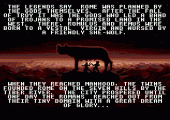
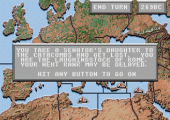
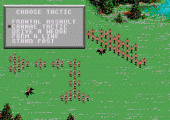
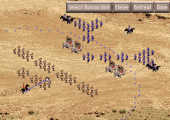
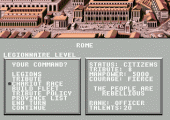
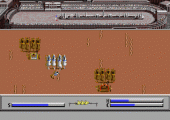
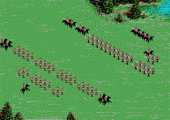
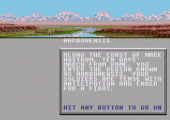
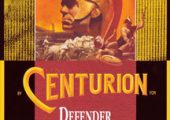
Recent Comments